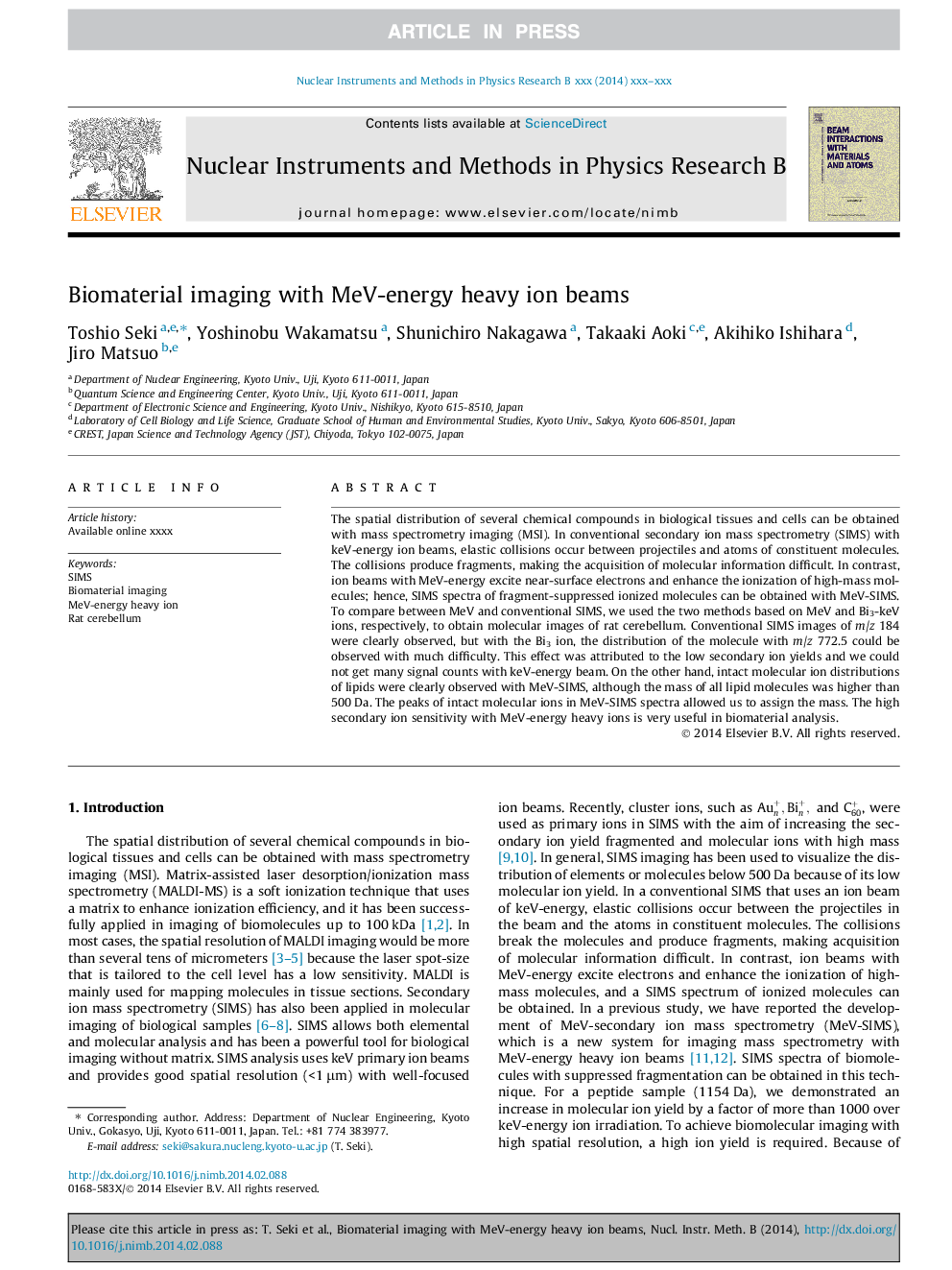| Article ID | Journal | Published Year | Pages | File Type |
|---|---|---|---|---|
| 8041608 | Nuclear Instruments and Methods in Physics Research Section B: Beam Interactions with Materials and Atoms | 2014 | 4 Pages |
Abstract
The spatial distribution of several chemical compounds in biological tissues and cells can be obtained with mass spectrometry imaging (MSI). In conventional secondary ion mass spectrometry (SIMS) with keV-energy ion beams, elastic collisions occur between projectiles and atoms of constituent molecules. The collisions produce fragments, making the acquisition of molecular information difficult. In contrast, ion beams with MeV-energy excite near-surface electrons and enhance the ionization of high-mass molecules; hence, SIMS spectra of fragment-suppressed ionized molecules can be obtained with MeV-SIMS. To compare between MeV and conventional SIMS, we used the two methods based on MeV and Bi3-keV ions, respectively, to obtain molecular images of rat cerebellum. Conventional SIMS images of m/z 184 were clearly observed, but with the Bi3 ion, the distribution of the molecule with m/z 772.5 could be observed with much difficulty. This effect was attributed to the low secondary ion yields and we could not get many signal counts with keV-energy beam. On the other hand, intact molecular ion distributions of lipids were clearly observed with MeV-SIMS, although the mass of all lipid molecules was higher than 500Â Da. The peaks of intact molecular ions in MeV-SIMS spectra allowed us to assign the mass. The high secondary ion sensitivity with MeV-energy heavy ions is very useful in biomaterial analysis.
Keywords
Related Topics
Physical Sciences and Engineering
Materials Science
Surfaces, Coatings and Films
Authors
Toshio Seki, Yoshinobu Wakamatsu, Shunichiro Nakagawa, Takaaki Aoki, Akihiko Ishihara, Jiro Matsuo,
